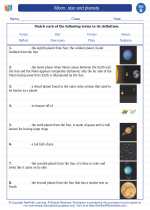Saturn
Saturn is the sixth planet from the Sun and the second-largest in the Solar System, after Jupiter. It is a gas giant with an average radius about nine times that of Earth. It is best known for its prominent ring system, which is composed mostly of ice particles with a smaller amount of rocky debris and dust.
Physical Characteristics
Saturn has a pale yellow hue due to ammonia crystals in its upper atmosphere. It has a prominent ring system that stretches outwards for thousands of kilometers from the planet's equator. The planet itself is mostly composed of hydrogen and helium, with a rocky core at its center. Saturn has a strong magnetic field and numerous moons, the largest of which is Titan.
Atmosphere
The atmosphere of Saturn is mostly composed of hydrogen and helium, with trace amounts of other gases. It has a banded appearance similar to Jupiter, with high-speed winds in its upper atmosphere. The planet's north and south poles have unusual hexagonal cloud patterns that are thought to be related to the planet's unique rotation and atmospheric dynamics.
Ring System
Saturn's ring system is one of the most distinctive features of the planet. The rings are made up of countless small particles, ranging in size from micrometers to meters. These particles orbit around Saturn in a thin plane, creating the appearance of multiple rings when viewed from Earth. The origin of the rings is still a topic of scientific research, but it is believed that they may be remnants of a shattered moon or captured material from the outer solar system.
Study Guide for Saturn
- What is the position of Saturn in the Solar System?
- What gives Saturn its pale yellow hue?
- What is the composition of Saturn's atmosphere?
- What is the most prominent feature of Saturn?
- What is the leading theory regarding the origin of Saturn's rings?
Use the above information to create a comprehensive study guide for Saturn, including its position in the Solar System, physical characteristics, atmosphere, and ring system.
.◂Science Worksheets and Study Guides Second Grade. Moon, star and planets
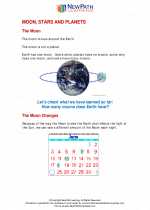
 Activity Lesson
Activity Lesson
 Worksheet/Answer key
Worksheet/Answer key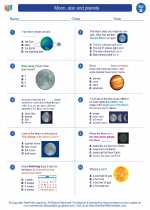
 Worksheet/Answer key
Worksheet/Answer key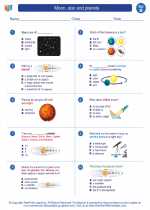
 Worksheet/Answer key
Worksheet/Answer key
 Vocabulary/Answer key
Vocabulary/Answer key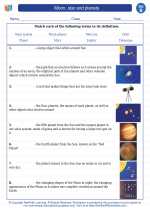
 Vocabulary/Answer key
Vocabulary/Answer key